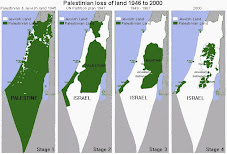The dozens of illegal buildings that were demolished this week at the Bedouin village of al-Arakib constituted a small fraction of the 45,000 structures in Negev villages that were built without permits.
Knesset data suggest that about 1,500 such buildings are built each year in unrecognized villages.
A new research study undertaken by Dirasat, the Arab Center for Law and Policy indicates that the phenomenon is likely to accelerate in the coming years. That is because, the study claims, various legal and institutional obstacles in Israel's municipal planning systems force residents to resort to illegal construction. About a quarter of Arab towns and villages lack detailed development plans, the study claims. Hence, residents in these locales have no hope of receiving building permits. In cases where development plans have been authorized, the issuance of construction permits is often delayed due to a lack of infrastructure.

The study, edited by attorney Kais Nasser, a lecturer at the Hebrew University of Jerusalem's Law Faculty and a legal adviser to various local councils and Arab planning and construction bodies, is designed as a comprehensive survey of determinants leading to illegal construction. The study shows that since Israel's establishment, the number of Arab citizens of the state has grown sevenfold, whereas land available to these residents' towns and villages has not increased, and remains at 2.5% of the territory in the state. In contrast to the 1,000 Jewish communities that have been established since 1948, not a single new Arab town or village has been created, apart from seven Bedouin villages spread across the Negev.
"The Arab citizen in Israel suffers from no illegal building syndrome or hobby," explains Nasser. "Like any citizen in the state, the Arab citizen would build with a permit, were there a planning framework available to issue him such a permit. References to 'enforcement of the law' made by planning authorities with regard to illegal construction in the Arab communities is a one-sided discussion that ignores Arab citizens' rights to land, housing and development."
The study points to three types of obstacles: institutional, planning and legal-bureaucratic. According to the law, a condition for the issuance of a building permit is the existence of a detailed development plan that stipulates zoning designations for particular sites. The study shows that 25 out of 100 Arab towns and villages in Israel lack such development plans, which would enable residents to obtain building permits. Other Arab communities have old, outdated development plans.
Circumstances are still worse with regard to 36 unrecognized villages in the Negev. These communities lack municipal status, as well as basic services such as water and electricity.
Another problem is that only 6% of Arab councils operate their own local planning and building committees - in contrast, in 55% of Jewish communities, planning and building committees are administered by the communities themselves. In addition, the study points out, various national or district level development plans frustrate the development of Arab towns and villages. These national or regional-level plans classify open spaces, which could be used for Arab building, as agricultural areas, or preserved green areas.
When there is neither an institutional obstacle impeding the submission of a suitable development plan, nor a planning issue blocking the authorization of such a plan, various legal and bureaucratic matters often stand in the way of Arab construction. For instance, the study points to the example of a development plan for the northern village Reina. Approved 10 years ago, the plan designated a certain area in the village for home residences. However, no village resident has been able to obtain a building permit for this area, since it lacks access roads and infrastructure necessities required by the regional planning committee.
"Young Arab citizens today feel despair about their chances for building homes and advancing. There is no area slated for development, and so natural growth of their communities is stifled," explains Dirasat director Dr. Yusef Jabareen. "This reality should sound alarm bells among decision makers and cause them to take steps to guarantee basic rights to Arab citizens, before it is too late."







